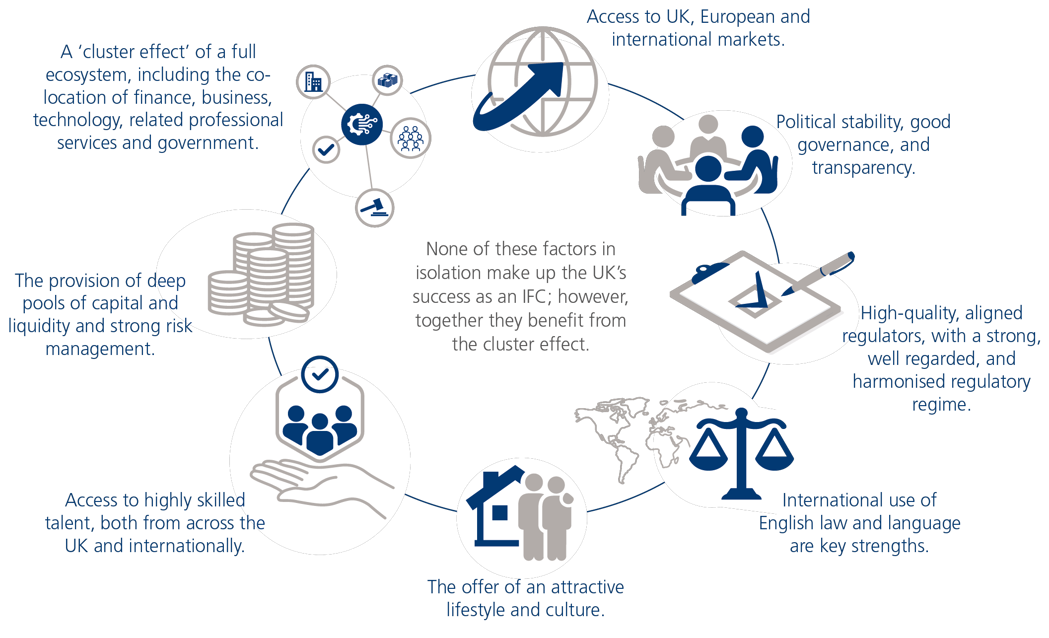
Key legal and regulatory IFC Models for the HCMC IFC to consider
Establishing the right legal and regulatory environment in HCMC is crucial for building an international financial hub that attracts international investment. This can be achieved by implementing a review and modernise’ IFC model, a ‘hybrid’ IFC model, or an ‘independent’ IFC model, all of which would be underpinned by active collaboration between regulators and ecosystem stakeholders. These various options can now be considered by the authorities as they look to develop the HCMC IFC, and drive forward their strategic objectives:
Review and Modernise Model
Existing structures (e.g., courts, judiciary, regulators, capital markets) and existing legal and regulatory regime are retained. Key areas are reviewed and modernised, for example:
- Align financial regulations with international best practice.
- Identify new or existing areas for specialist bespoke regimes, (e.g., FinTech, green finance).
- Capacity building for existing regulators and judiciary.
- Update International Arbitration Centre (IAC) rules and enhance rapid and effective enforcement of awards.
Mid-Range / ‘Hybrid’ IFC Model
Significant intervention to create specialist institutions and regulators, for example:
- Create specialist institutions using a combination of external and local expertise.
- Create a specialist commercial court within the existing judicial system, overseeing the financial regulator and supporting an IAC.
- Create a new financial regulator (or consolidate the existing domestic regulators) with enhanced powers of enforcement.
- Introduce legislation and financial regulations targeted at centre’s USPs and based on best practice.
- Align IFC’s strategic objective with key government policy agendas, so as to ensure that IFC development is high on the national agenda.
- New regime to apply only to certain entities (e.g., financial institutions, financial services companies with significant turnover, certain key financial activities).
- Consider consolidating and reforming the capital, FX, commodities, and derivatives markets.
- Significant capacity building.
- Create modern infrastructure and a physical space for the centre, but without restricting the centre activities to
a defined territory.
- Vietnamese is the official language but supported by extensive use of English.
- Visa exemptions for those working in the financial sector.
Independent, freestanding IFC Model
- New, separate, and independent legal and regulatory regimes.
- Independence underpinned by changes to core legislation.
- Legal regime based on common law principles.
- New dispute resolution structures (courts and IAC).
- Bespoke set of ‘principles based’ financial regulations.
- New capital market.
- Restricted membership (FIs, financial services companies, ancillary service providers).
- Free standing company registry.
- Favourable tax regime for members.
- Visa free operation.
- Newly created infrastructure and designated territory.
- No capital restrictions.
- Mix of reserve currencies.
- English and Vietnamese are the official languages of IFC.
Key next steps for the development of HCMC IFC
TheCityUK recommends that Viet Nam authorities consider which model best aligns with its development objectives. The focus should be on socialising the initiative across government and regulators, to identify how HCMC can leverage its existing advantages and position itself for the future through an IFC. No IFC is identical and each centre benefits from the individual strengths which stem from its history or geography. While the best model is being considered, Viet Nam can also take steps to implement key building blocks of an effective ecosystem and h lay the foundation for a future IFC. These include:
- Formally elevating the development of the HCMC IFC in the national agenda, by highlighting its role in the Vision to 2045 and net-zero by 2050 efforts.
- Establishing an international dispute resolution mechanism, such as an international arbitration centre or entering into collaboration agreements with the London Court of International Arbitration.
- Easing the visa regime for the international professional workforce, particularly in the financial sector to benefit the Vietnamese economy and help develop its local talent.
- Establishing and implementing a National FinTech Strategy.
- Developing a strategy for green and sustainable finance that considers the role HCMC IFC could play in driving green finance and investment in Viet Nam and wider region, including how the IFC could facilitate the implementation of the Just Energy Transition Partnership (JETP) initiative.
- Aligning with international standards, including adopting IFRS accounting standards.
- Allowing businesses to hold FX accounts.
Click the 'Download Now' button to read the full report in English, or use the link below to read in Vietnamese.

